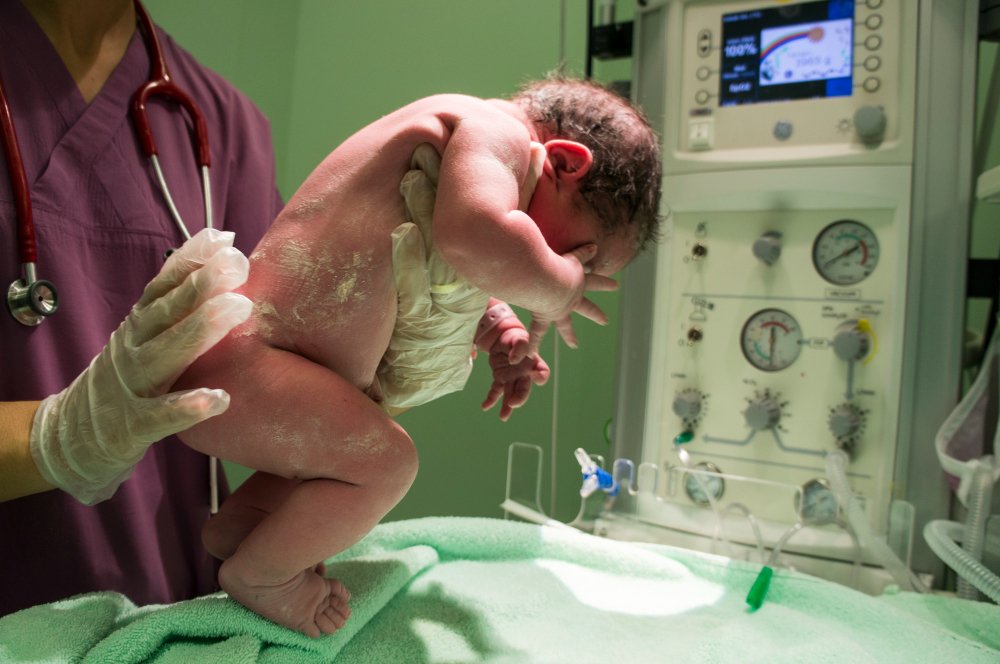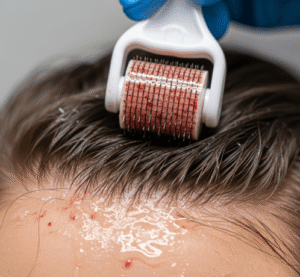Overview
Apnea of prematurity (AOP) is a common condition in premature infants where they temporarily stop breathing for more than 20 seconds. It often occurs in infants born before 37 weeks of gestation, primarily due to the immaturity of the central nervous system and respiratory control. Although most cases resolve with age, close monitoring and treatment are essential to prevent complications such as low oxygen levels or bradycardia.
What is Apnea of Prematurity?
Apnea of prematurity is a developmental disorder seen in preterm babies, especially those born before 28 weeks of gestation. It is characterized by pauses in breathing that can be accompanied by a drop in heart rate (bradycardia) and oxygen saturation (desaturation). The condition is considered a result of an immature brainstem that fails to regulate normal respiratory rhythms.
There are three types of apnea in preterm infants:
- Central Apnea: No respiratory effort due to lack of signal from the brain.
- Obstructive Apnea: Airflow blockage despite respiratory effort.
- Mixed Apnea: Combination of central and obstructive apnea.
Symptoms
- Breathing pauses lasting 20 seconds or more
- Shorter pauses with bradycardia (slow heart rate) or desaturation (low oxygen)
- Cyanosis (bluish color of skin or lips)
- Pallor or limpness
- Sudden need for stimulation to resume breathing
Causes
- Immature brainstem (primary cause)
- Underdeveloped respiratory muscles
- Gastroesophageal reflux
- Infections such as sepsis or meningitis
- Temperature instability
- Anemia
- Metabolic imbalances (e.g., hypoglycemia, hypocalcemia)
Risk Factors
- Prematurity (especially <28 weeks gestation)
- Low birth weight
- Male sex
- History of neonatal infections
- Intraventricular hemorrhage
- Respiratory distress syndrome
Complications
- Repeated oxygen desaturation episodes
- Bradycardia-related cardiac issues
- Delayed neurodevelopment
- Increased risk of sudden infant death syndrome (SIDS)
- Extended NICU stay
- Parental stress and anxiety
Prevention
- Preventing preterm birth through proper prenatal care
- Avoiding maternal smoking and infections during pregnancy
- Use of antenatal corticosteroids to promote fetal lung maturity
- Maintaining a stable temperature and oxygenation in newborns
- Timely diagnosis and treatment of neonatal infections
Treatment Options in Korea
South Korea provides high-level neonatal intensive care and cutting-edge technology to manage apnea of prematurity effectively.
1. Monitoring and Supportive Care
- Continuous cardiorespiratory monitoring in NICUs
- Use of apnea monitors and pulse oximeters
- Gentle stimulation (e.g., tactile or auditory) during apnea episodes
2. Pharmacological Treatment
- Caffeine citrate: Widely used in Korea to stimulate the respiratory center in the brain. It’s effective in reducing the frequency of apnea episodes and improving outcomes.
- Theophylline: Less commonly used alternative to caffeine.
3. Respiratory Support
- Nasal CPAP (Continuous Positive Airway Pressure) to keep airways open
- Nasal intermittent positive pressure ventilation (NIPPV) for more severe cases
- Mechanical ventilation in extremely preterm infants with severe episodes
4. Nutritional and Thermal Support
- Maintaining optimal temperature and glucose levels
- Providing adequate nutrition through parenteral or enteral feeding
5. Long-term Care and Follow-up
- Developmental screening and neurodevelopmental follow-up in specialized pediatric clinics
- Family education and home monitoring if needed













